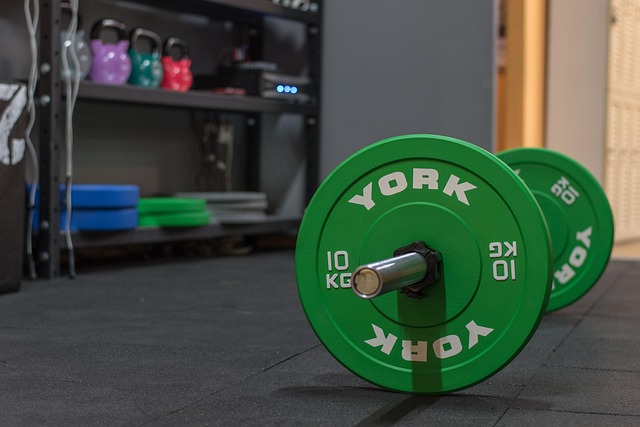Endurance and stamina are two critical components of physical fitness that can significantly enhance your quality of life. Whether you’re an athlete training for a marathon, a busy professional juggling work and family responsibilities, or someone simply looking to improve overall health, building endurance and stamina is essential. These attributes not only help you perform better in physical activities but also enable you to stay energized throughout the day. In this article, we’ll explore practical strategies to build endurance and stamina effectively, while avoiding common pitfalls.
Understanding Endurance and Stamina
Before diving into how to build these qualities, it’s important to understand what they mean:
- Endurance refers to your body’s ability to sustain prolonged physical activity over time. It’s often associated with cardiovascular health and muscular resilience.
- Stamina , on the other hand, is your capacity to maintain high energy levels and focus during demanding tasks—both physical and mental.
While the terms are sometimes used interchangeably, they complement each other. Building endurance helps you go longer, while stamina ensures you stay strong and focused throughout.
1. Start with Cardiovascular Training
Cardiovascular exercises are the foundation of endurance and stamina development. They strengthen your heart, lungs, and circulatory system, enabling your body to deliver oxygen more efficiently to working muscles.
Types of Cardio Exercises
- Running or Jogging: Start with short distances at a comfortable pace and gradually increase intensity and duration.
- Cycling: Whether outdoors or on a stationary bike, cycling builds leg strength and boosts cardiovascular health.
- Swimming: This full-body workout improves lung capacity and muscle endurance without putting stress on joints.
- Rowing: Combines cardio and strength training, making it ideal for building both endurance and stamina.
Progressive Overload
To see improvements, incorporate progressive overload into your routine. This means gradually increasing the intensity, duration, or frequency of your workouts. For example, if you run 2 miles today, aim for 2.5 miles next week. Small increments prevent burnout and reduce injury risk.
2. Incorporate Strength Training
While cardio focuses on endurance, strength training plays a crucial role in supporting stamina by enhancing muscle efficiency and reducing fatigue.
- Compound Movements: Exercises like squats, deadlifts, push-ups, and pull-ups engage multiple muscle groups, improving overall strength and coordination.
- Bodyweight Workouts: Calisthenics routines (e.g., burpees, planks) challenge your muscles and cardiovascular system simultaneously.
- Resistance Bands: Lightweight yet effective tools for building muscle endurance without heavy weights.
Strength training should be balanced with rest days to allow muscles to recover and grow stronger.
3. Prioritize Consistency Over Intensity
One of the biggest mistakes people make when trying to build endurance and stamina is pushing too hard too soon. Instead of focusing solely on intense workouts, prioritize consistency.
- Set realistic goals based on your current fitness level.
- Aim for 3–5 sessions per week, alternating between cardio and strength training.
- Track your progress using apps or journals to stay motivated.
Consistent effort over weeks and months will yield better results than sporadic bursts of intense activity.
4. Fuel Your Body Properly
Nutrition plays a vital role in building endurance and stamina. Without proper fuel, even the best workout plan will fall short.
Balanced Diet
- Carbohydrates: Your primary source of energy. Opt for complex carbs like whole grains, oats, quinoa, and sweet potatoes.
- Proteins: Essential for muscle repair and growth. Include lean meats, eggs, beans, and plant-based proteins in your diet.
- Healthy Fats: Support hormone production and provide sustained energy. Avocados, nuts, seeds, and olive oil are excellent choices.
- Hydration: Dehydration can severely impact performance. Drink water consistently throughout the day and consider electrolyte drinks during intense workouts.
Pre- and Post-Workout Meals
- Before exercising, eat a light meal rich in carbs and protein about 1–2 hours beforehand (e.g., banana with peanut butter).
- Afterward, refuel with a combination of protein and carbs within 30 minutes to aid recovery (e.g., Greek yogurt with berries).
5. Focus on Mental Resilience
Building stamina isn’t just about physical conditioning—it’s also about mental toughness. Pushing through discomfort and staying committed requires mental discipline.
Mindfulness Techniques
- Practice deep breathing exercises to calm nerves before challenging workouts.
- Use visualization techniques to imagine yourself succeeding in difficult situations.
- Break tasks into smaller chunks mentally to avoid feeling overwhelmed.
Positive Self-Talk
Replace negative thoughts (“I can’t do this”) with affirmations (“I am capable and strong”). A positive mindset can significantly boost your ability to endure challenges.
6. Get Adequate Rest and Recovery
Rest is as important as exercise when it comes to building endurance and stamina. Overtraining can lead to injuries, fatigue, and decreased motivation.
- Sleep: Aim for 7–9 hours of quality sleep each night to support recovery and hormonal balance.
- Active Recovery: On rest days, engage in low-intensity activities like walking, yoga, or stretching to promote blood flow and flexibility.
- Listen to Your Body: Pay attention to signs of overtraining, such as persistent soreness, irritability, or lack of progress.
7. Mix Up Your Routine
Doing the same exercises repeatedly can lead to plateaus and boredom. Keep things fresh by incorporating variety into your workouts.
- Try new activities like hiking, dancing, or martial arts.
- Alternate between high-intensity interval training (HIIT) and steady-state cardio.
- Join group classes or partner up with a friend for accountability and fun.
Variety not only keeps you engaged but also challenges different muscle groups, leading to well-rounded fitness.
8. Monitor Progress and Adjust Accordingly
Tracking your progress helps you stay motivated and identify areas for improvement. Use metrics like:
- Distance covered during runs or walks
- Time taken to complete specific tasks
- Heart rate recovery after exercise
- Personal records in weightlifting or timed challenges
If you notice stagnation, tweak your routine by changing exercises, increasing intensity, or adjusting nutrition.

Leave a Reply